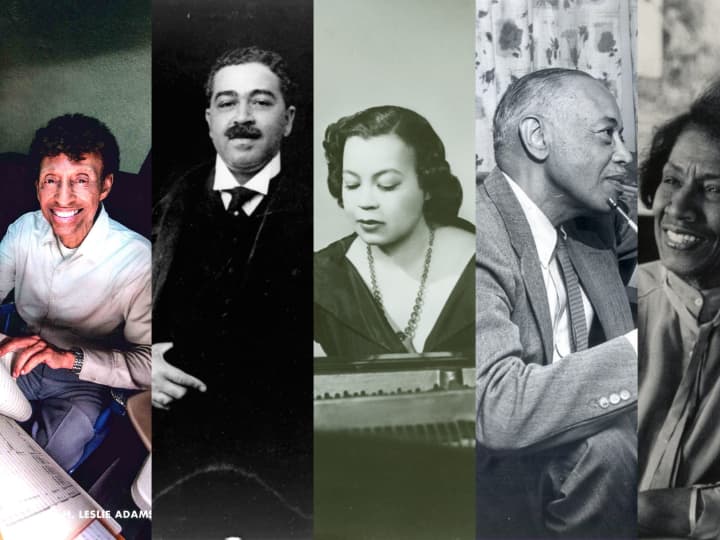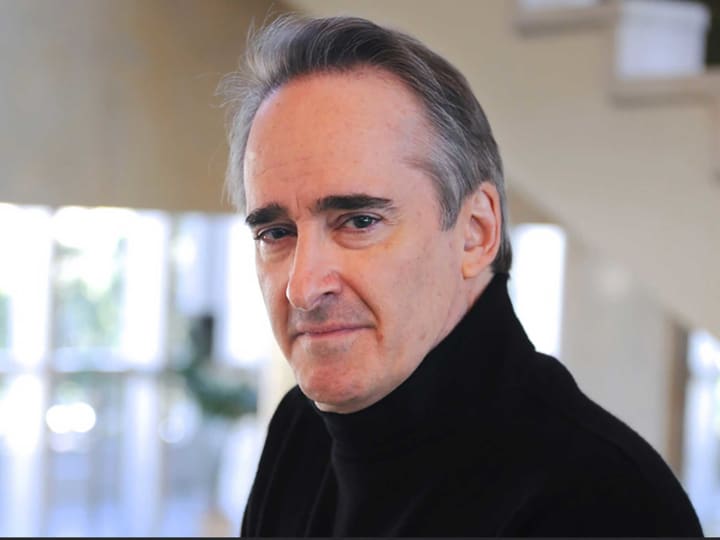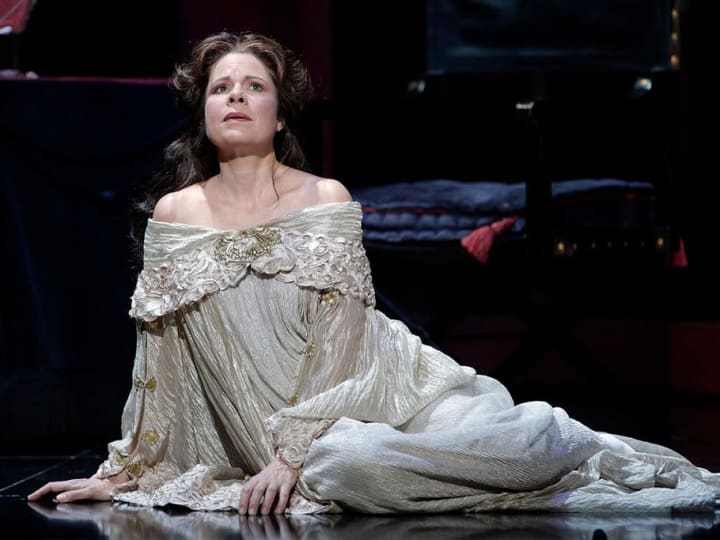This production of The Magic Flute is arguably the most, well, magical (yes, we went there) show we’ve ever presented. From flying elephants to giant spiders, there’s enough whimsy to carry you thorough next year. But before you can soak it all in, there’s a lot of theatrical wizardry you should know to help you understand just what a show Kosky's Magic Flute is.
We spoke to Jeff Kleeman, our veteran Technical Director, about everything that goes on behind the scenes, and how his own team of staging experts bring this show to life.
While there are a ton of moving parts and pieces to this show, there are three huge components to the magic:
The Set
We start with a white wall. It’s shaped in such a way that considers the aspect ratio of the videos projected onto it and is specifically painted white so it’ll work like a movie screen (that’s how the animations look so sharp and bright throughout the show).
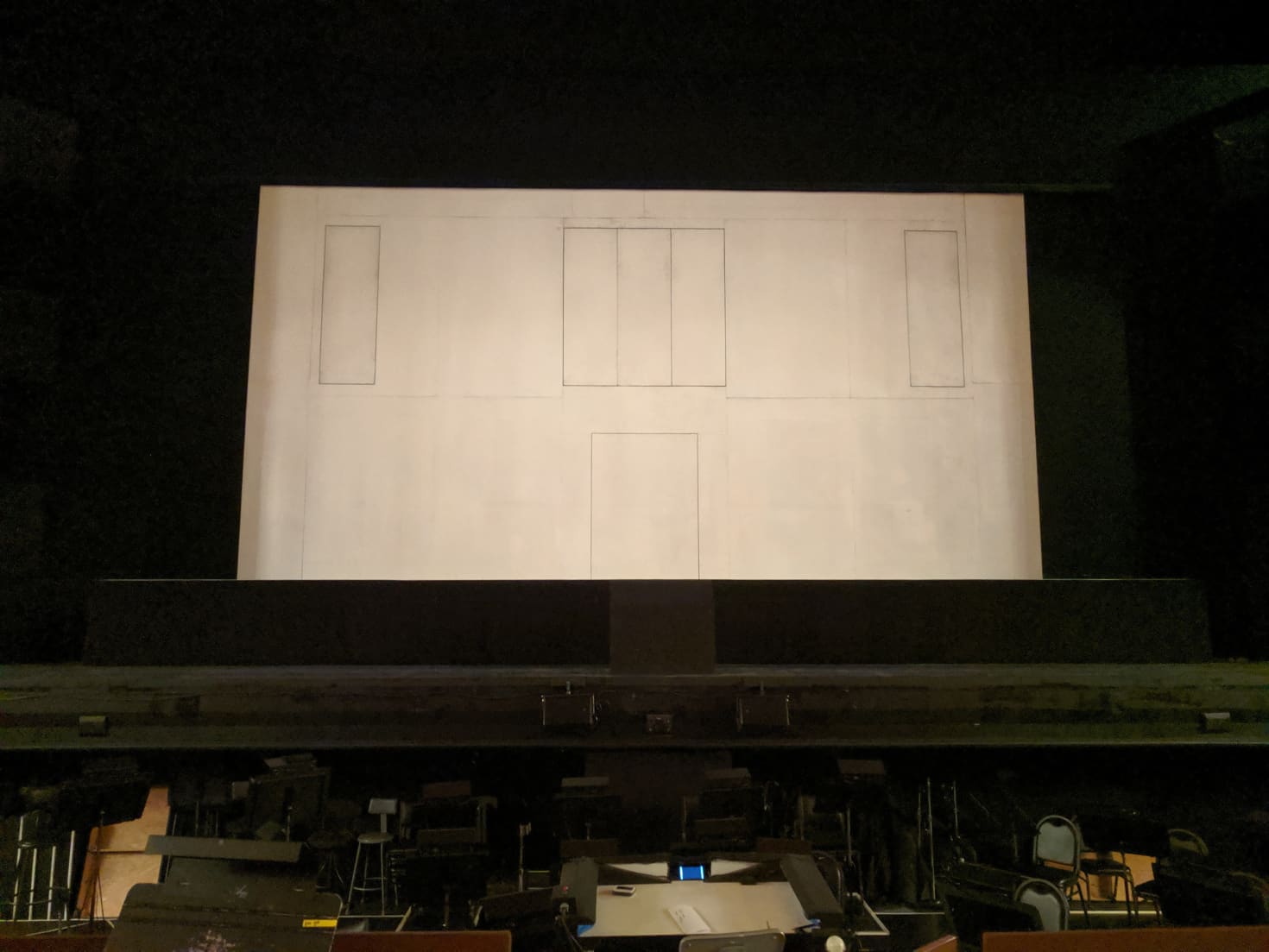
The white wall the animations are projected onto. The rectangles are the doors performers go in and out of.
While this wall might look rather simple from the front of house, what goes on behind it is anything but. The wall is actually a two-story structure. There’s a ground level and second level that’s serviced from a balcony, with a set of staircases to move from one to the other. This is where all the action happens. “Singers, crew, and wardrobe move rather rapidly and busily from door to door, position to position, costume to costume, for each of the different scenes, so there’s always a lot of movement happening backstage,” said Jeff.

The back from the back, with staircases to get from one level to the other.
10 carpenters are stationed behind each of the 6 doors built into the wall. That’s how our performers enter and exit audience view during scene changes. If you’re wondering how our singers stay safe on the second floor, don’t worry. They’re strapped into harnesses by our carpenters and have platforms to stand on (but you’ll notice they stand rather still when they’re on the upper level).
The Animations
Arguably, these are the most intricate element of the show (and are what make this Magic Flute what it is). While the show appears to the audience as one long movie, it’s actually comprised of over 1,000 video files that are called up individually and projected with an 18k Lumin projector that’s set up 120 feet away from the stage on the orchestra level (but we keep a 30k Lumin projector ready to go as a backup). “The first thing we do is map those projectors very, very precisely to the wall and doors. The references have to be less than a quarter inch away for everything to line up properly,” Jeff said.
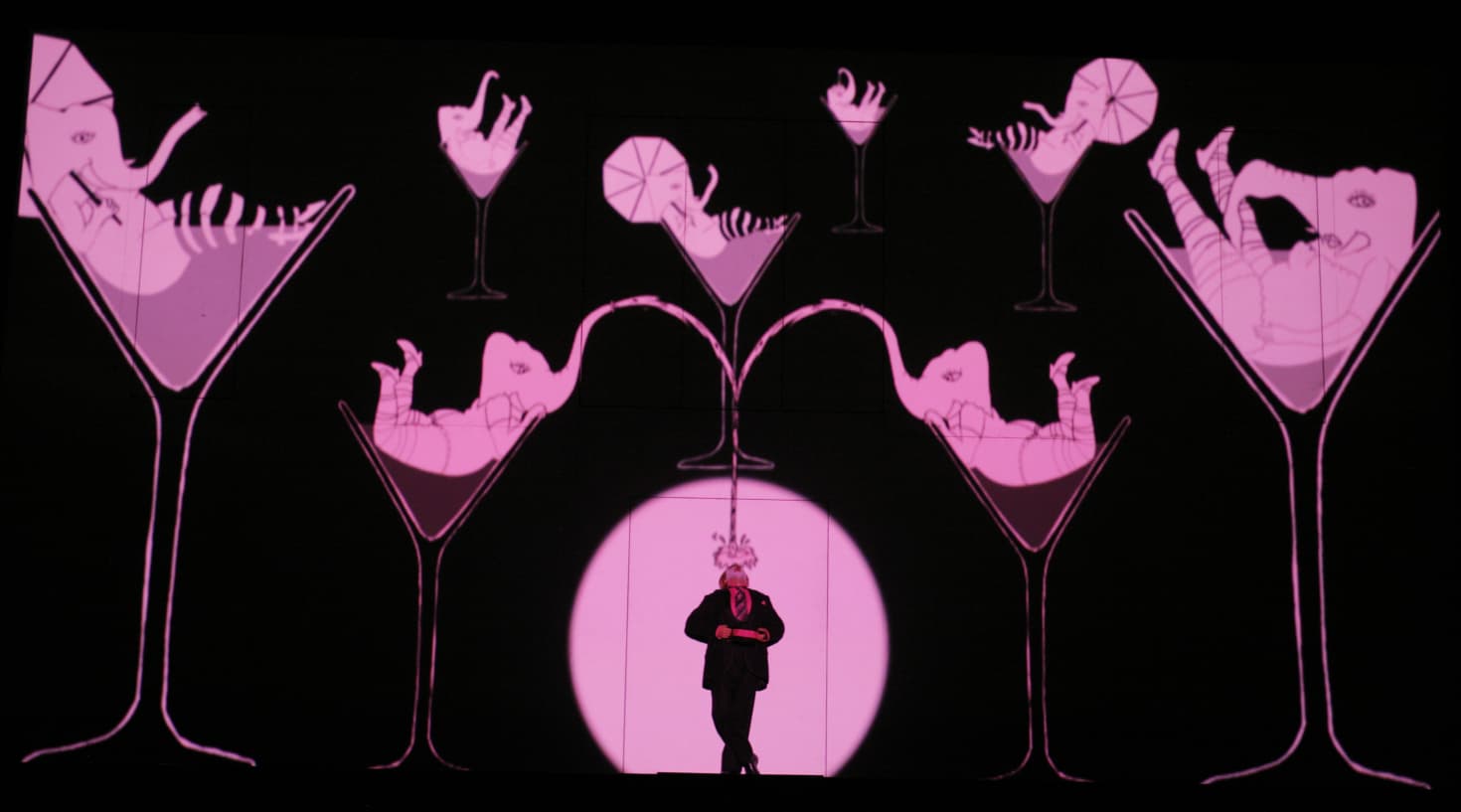
An animation from the show (or what you'll see from the house).
The animation layers are then programmed into a media server called Catalyst and are run off of Mac computers, but the tech tricks are just getting started. “We also have a special control console that triggers those video cues because they happen so fast. We have to have some tricks to [project the animations] very quickly and reliably without triggering the next animation too early, so there are some complexities we have to work around.”
The Control Booth
Now this is really where all the animation magic happens. The Lighting and Control booth is taken over by one of the Stage Managers and projection operators. They work side by side to call and run the animations that are happening on stage using different control systems. While this setup is unique, it’s absolutely necessary.
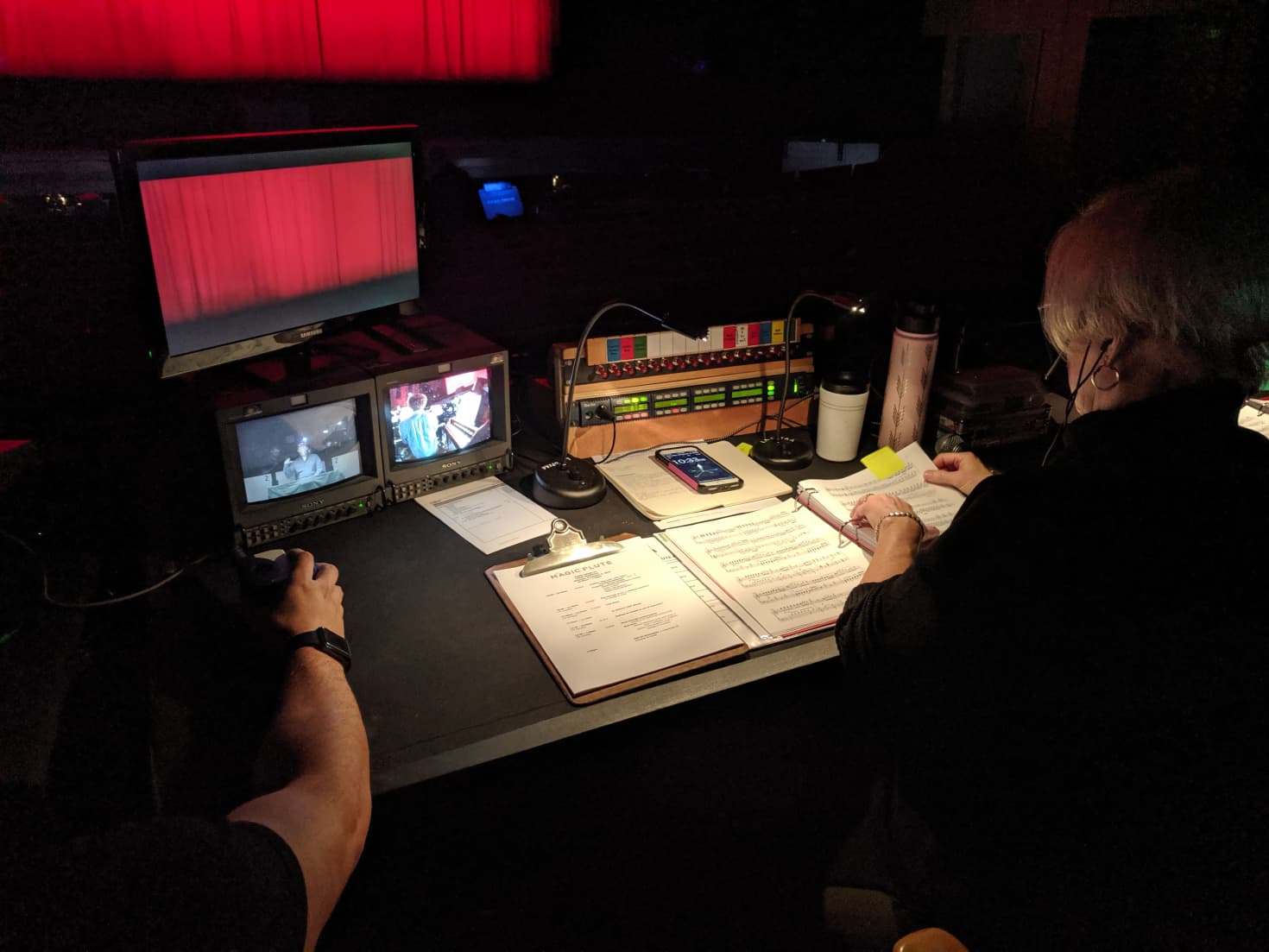
A shot from the Control Booth, with our Stage Manager and Media Operator.
“In any other show, we typically have lighting control on one console and media control on another,” Jeff said. “But in this show, there’s a need for an exact momentary switch that triggers one cue but not the next, so the rapid succession of cues that the Stage Manager is calling can be seen in real time: what is happening, what is next, and what is completed. It takes that intimacy between the Stage Manager and Media Operator to keep up with this operation.”
But how does the Stage Manager keep up with all those cues?
They have a complete score of the show in a big binder, complete with hundreds of colorful Post-it notes that indicate cue placements and standbys. Even with all of those cues, the timing of those calls will always rely on the music.
“As the Stage Manager follows the music, the timing or tempo of the piece can be slightly different from night to night. So, if the music ran for 2.5 hours one night, it might be a minute shorter or longer the next night and that’s normal. While it might be imperceptible to the audience, the difference would be measurable.”
All timing aside, one thing's for certain: The Magic Flute is sure to blow you away. What? Still need your tickets? Snag them here before this twice sold out show sells out for a third time.

